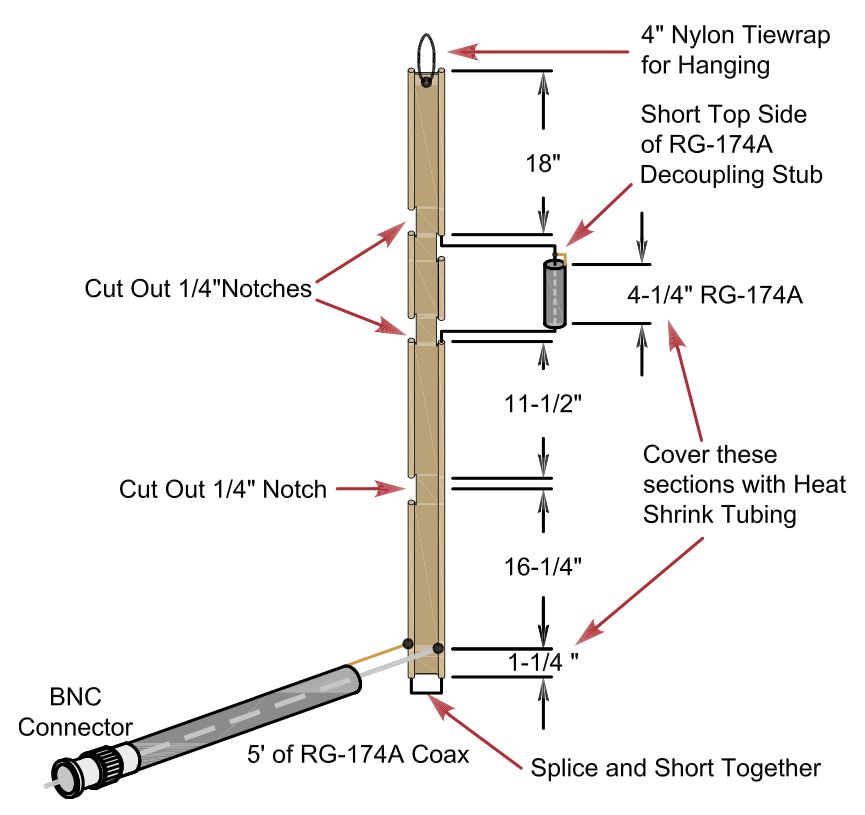Ed Fong DBJ-2 Review

Antenna design is a game of tradeoffs. There is no such thing as an inexpensive, portable, lightweight, small, all band, high gain, omnidirectional antenna. The good news is that for any given use case, there is probably an antenna design that works pretty well. The antennas that come with most handhelds are inexpensive, small, and portable, but have terrible performance. Their low gain is especially worrisome on a handheld which typically has only 5W of power. I have an antenna that’s portable, small, with at least 7 dB of gain over a typical rubber duck: Ed Fong’s DBJ-2.
Dr. Ed Fong WB6IQN teaches RF communications courses at UC Santa Cruz. I’ve never met Ed in person, but he’s very friendly over email. Josh Nass interviewed Dr.Fong and it’s worth a couple hours if you want to learn more about Ed and what he does. Ed has published numerous articles about the antennas he has designed. Ed and his students make and sell antennas for nominal cost. You could construct your own from Ed’s published designs, but I choose to buy them from Ed and his students to support their work. And they are much better at tuning antennas than I am.
Ed’s DBJ-2 is a portable VHF-UHF roll-up J-pole antenna constructed out of 300 Ω twin lead. It’s very flexible and can easily roll up into a 6 inch coil. When extended, it’s 92 inches long. The antenna itself is 54 inches and the soldered on feedline is another 38 inches. This antenna has ½ wave radiating elements on both the 2m and 70cm amater radio bands. The SWR never exceeds 1.7 when transmitting on any frequency in those bands, and for the meaty part of the bands it’s less than 1.5.

The attached feedline has a BNC connector, but Ed includes SMA-F and SMA-M adapters so you can connect it to any handheld.
This antenna performs much better than any antenna I’ve ever used on a handheld. I don’t have the equipment to do proper instrumented testing, but Ed does. He published the results in a March 2007 QST article (which is freely available on his website):
I measured the DBJ-2 in an open field using an Advantest R3361 Spectrum Analyzer. The results are shown in Table 1. The antenna gives a 7 dB improvement over a flexible antenna at VHF. In actual practice, since the antenna can be mounted higher than the flexible antenna at the end of your handheld, results of +10 dB are not uncommon. This is the electrical equivalent of giving a 4 W handheld a boost to 40 W.
The nylon zip tie on the end of the antenna makes it easy to attach a length of paracord. Throw the free end of the paracord over a branch in a tree, and hoist up the antenna. I pack the DBJ-2, a 6 ft feedline extension, and 25 ft of paracord in a pouch and bring it along when I’m in the backcountry.
The trade-off with this antenna is that you can’t keep it attached while you are moving. You can’t use the DBJ-2 while riding a bike, or from inside a car. I carry it while hiking or while riding ATVs, and it only takes a moment to set it up when I want to use the radio.
The tradeoffs made by the DBJ-2 antenna are different than most other handheld antennas, and that makes it a great addition to my kit.
